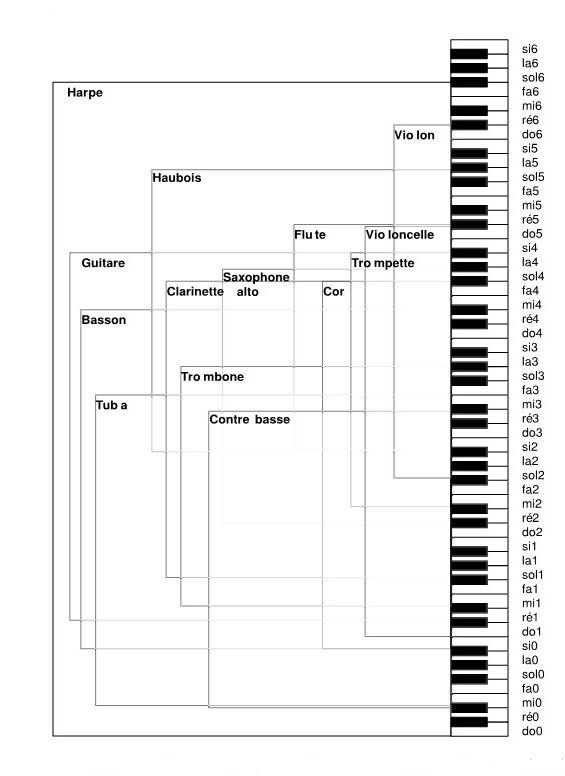IMPROVISATION AND ARRANGEMENT
Improvisation is freeing yourself from the illusion of believing yourself to be free.
(Bernard Lubat)
Improvisation is the art of composing in the moment. It can consist simply in tackling a new embellishment chord or an attack pattern, or be complex: jazz solo. Improvisation is an important part of playing the acoustic guitar. For example, many bluesmen and folkmen take great pride in never playing a song twice the same.
Musicians of all styles use improvisation as a means of expressing the emotions and attitudes of the moment.
Why improvise?
• To bring freshness and spontaneity to a public performance.
• To express your personal creativity in a piece of music.
• To create a musical dialogue with another musician.
TOOLS AND TECHNIQUES
There are many ways to approach improvisation. You can base it on your experience and your knowledge of what “sounds good”. But you can also try to push your limits, ears and instrument in support. The best improvisers can do both.
There are some basic tools that can help you start your journey:
• The theory
• Imitation and analysis of the musicians you admire
• rent with other people
A FEW WORDS ON MUSICAL THEORY
This chapter contains some basic theoretical elements that will help you in improvising. Theory is the set of terms and concepts we use to describe musical sounds and how they interact. Some of you sometimes feel that this theory may hinder spontaneity and creativity. Nay!
Remember, knowledge does no harm!
What the theory can do for you is:
• Help you establish matches between the sounds you hear.
• Expand your possibilities in terms of musical choices.
• Help you explain your music to another musician.
JUMP THE STEP
Combining theory with the study of the musicians you admire and the experience of playing in a group, is to acquire all it takes to be able to explore improvisation in unlimited ways. All that remains to be done then is to “leap into the unknown”. As you learn to improvise, try not to criticize yourself too much. Stay fearless, open, and have fun. Learn the rules and break them. It's not science, it's music
TIPS FOR. IMPROVISE
While it's tempting to learn scale positions and then run your fingers around at random while playing a lot of notes; it's much more musical to create melodies from scales. Here are some tips to help you achieve that:
1. Practice range positions throughout the handle - learn them as you move up and down
2. In a given position, practice the notes out of sequence but always making sure you know where you are. Name the degrees out loud while playing.
3. Try to accentuate the notes of the chords in your improvisation. This takes some practice, but you can start by accenting the notes of the A minor triad (l / 3 and 5) as you play the A minor pentatonic scale. To accentuate a note of the chord, locate it as the start or end point of a phrase, or make it last.
. Part Two — Improvisatio
n Below is an example of a solo using the minor pentatonic scale positions you learned in this lesson. It is based on the chord progression of the swing song Still A Minor At 32 (page 34). Then try to build your own solo using the pentatonic minor scale.
SPECIA BONUS
L The “bridge” in this solo uses triads with suspensions (page 10) to create a different effect. This helps to distinguish section B from section A.
CHAPITRE 5—L’IMPROVISATION
Leçon I : La Gamme Majeure
Leçon 2 : Le Cycle des Quintes
Leçon 3 : Doigtés de Gamme Majeure..........................
Leçon 4 : Exercices sur les Degrés de la Gamme Majeure ..49
Leçon 5 : Improvisation avec la Gamme Majeure........... 49
Leçon 6 : Les Intervalles
CHAPITRE 4-—TRAVAIL DU MANCHE - intermediaire 52
DEUXIÈME PARTIE—L’IMPROVISATION
Leçon 1 : Positions de Gamme Majeure...........................................................................................................
Leçon 2 : Connectez les Positions de Gamme sur le Manche................................................................
Sample Solo................................................................................................................................................
ARRANGEMENT
Range of orchestral instruments





